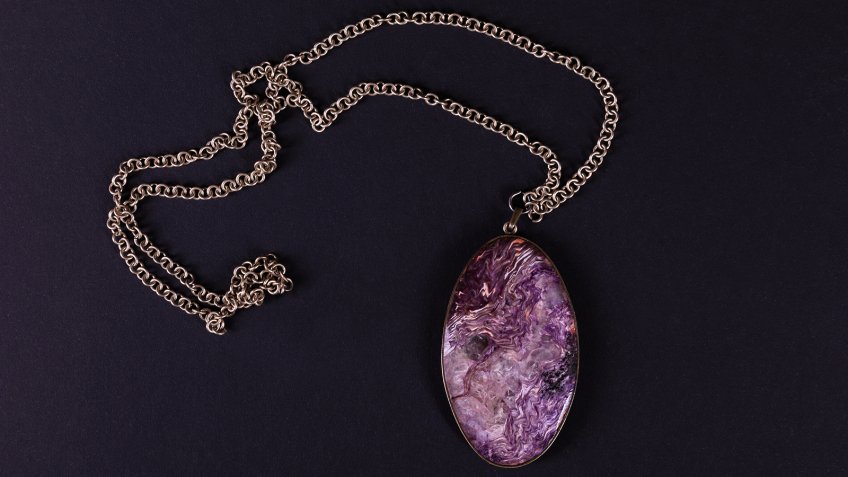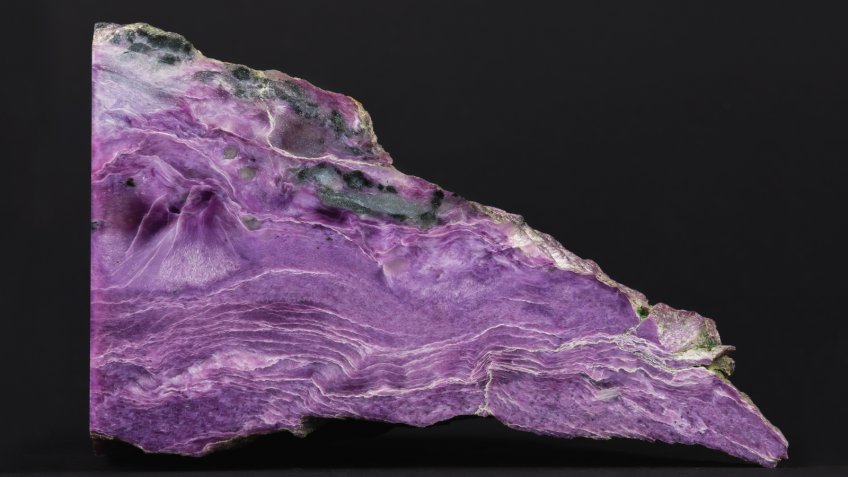
Until the middle of the twentieth century, mankind was unaware of the existence of this stone. During the next twenty years, the mineral had no official name, and American and Russian scientists were fighting for the right to be considered its discoverers. On Earth, there is only one single deposit of this mineral, and each and every rock hound dreams of getting their hands on a sample of this unique stone, not even knowing how dangerous it can be.
"Lilac stone", ”the miracle of Siberia" are the names for charoite, probably one of the most rarest semiprecious stones in the world, which can be found only in the remote areas of northern taiga, near the same-named Chara River. According to Yakut legends, the waters of this river are the tears of a local girl. She sacrificed herself to save the homeland and ancestors. The girl faced a difficult choice – either marrying an unloved one or seeing the death of her family. The Nature took pity on her sorrows and turned the young lady’s soul into a marvellous stone, reflecting various shades of purple in the sun’s light.
Charoite was discovered on two different occasions, with an interval of eleven years. At first, the newly discovered mineral was confused with an existing one, but later it turned out that it has no analogues on this planet. There is a story about a geologist who asked employees of the Louvre Museum to identify a sample of the lilac stone he brought from Irkutsk. At that time, the world-famous museum claimed that all minerals known to science were represented in their collection. Having investigated the discovery though, French scientists were forced to admit that they had not seen such a mineral before. They were even ready to buy it for any amount of money, but their proposal was refused.
Charoite became quite popular around the world yet before its official recognition as a gem-stone. Back then, Soviet geologists came up with an idea of designing a charoite room. In order for the State to allocate money for this project, it had to be supported by some large museum. Unfortunately, neither the Hermitage nor the Russian Museum were fond of the idea, but there is a version that the project still saw the light of day in Irkutsk with the help of local Mayor’s Office. The rumours are that this room is in some private collection.
The medical properties of the mineral are directly related to its visual appearance. Scientists have proven that purple colour has a good effect on the human nervous system. Therefore, one can calm down and relax just by staring at charoit for a long time. Specialists in crystal healing recommend wearing this stone as a talisman for immune stimulation, especially for people working with computer. Ancient Mongols used to add minerals in the tea brew, believing it to be a restorative drink that unites people, families and communities, protects them from negative thoughts and evil.
With each year, charoit prices are rising, which is caused by several factors. Firstly, the mineral is unusually coloured - it is purple. Moreover, there are bizarre markings on the surface of the stone, which are rather difficult to imitate. Therefore, all fake charoite items are of relatively low quality and easily distinguishable. Secondly, extrinsic properties of the stone cannot be modified artificially, since it is not amenable to coloration. Finally, there is a statutorily prescribed, annual production limit of charoite, which serves as a factor arousing interest in the mineral. In the end, there is less than 0.0016 grams of charoite extracted from explored fields per one Earth’s inhabitant.
Large items made of charoite, such as vases or table clocks, may cost over ten thousand dollars. The items from this mineral are often on display at exhibitions and auctions and Hollywood stars have been increasingly paying more attention to jewellery with this stone.
Despite the fact that charoite is a valuable ornamental stone, it should be treated with caution - there are radioactive samples among its varieties. These sample pieces have distinguishable yellow speckles, only a few millimetres in size, which means that there is a substance containing the radioactive element, thorium, inside the stone. For this reason, each person should abide by the simple rule - only purple samples to be taken.

